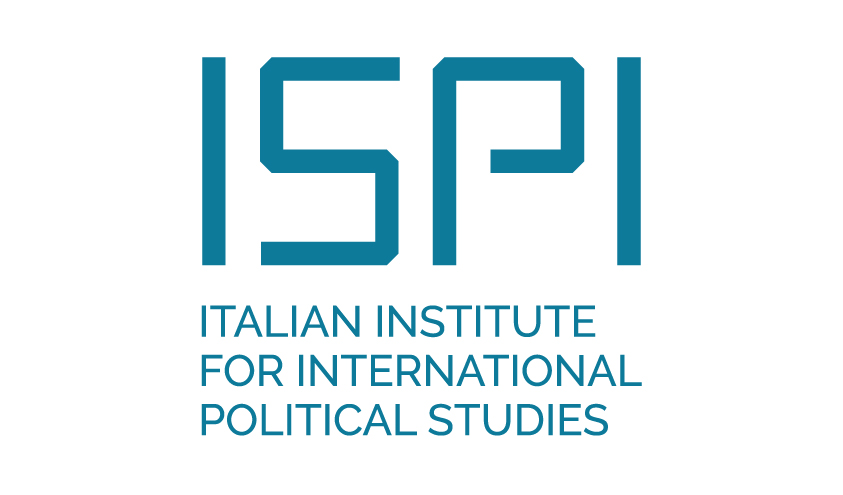US-China Relations: A Structural Clash

Since the fall of the Soviet Union, if not from the birth of the People’s Republic of China (PRC) itself, relations with United States have proven to be a central factor in China’s strategic calculus and a major driver of Chinese foreign policy. Indeed, America’s ability to weigh on all spheres of China’s national security – from domestic to regional and global – poses fundamental challenges for Beijing.

Not only has the US long held the capability to forestall China’s rise through policies and actions of containment – from sweeping economic sanctions to export controls to as-yet theoretical maritime blockades – but to interfere with domestic affairs, to weaken political stability and to threaten the territorial integrity of China itself, from across the Taiwan Strait to Xinjiang to Hong Kong. No other country poses such a broad-based challenge to the PRC both at home and abroad.
While US-China relations have always been fraught with challenges and pitfalls and undergone numerous crises over last seven decades, Washington’s turn towards a more confrontational approach within the last two years has thrown the relationship into a full-blown structural crisis. The ongoing trade war and the growing high-tech rivalry have grabbed headlines, but tensions have ratcheted up across the board – from the realm of defense and security to the diplomatic sphere to cultural and scientific exchanges. As the PRC marks its 70th anniversary, it is worth reflecting on the role the US has played in shaping strategy in China over the years and what the current crisis portends about the future of US-China relations and China’s regional and global strategy more broadly.
The seeds of distrust
From day one the United States played a key role in shaping the threat perceptions of China’s communist regime. In the inaugural years of the PRC, Chinese armed forces were locked head-on in fierce battles with American soldiers on the Korean Peninsula, while Washington recognized and actively supported the nationalist government in Taipei and sought to undermine Beijing’s efforts to define its national borders in regions such as Tibet. Washington posed a clear and visible threat to the survival of the communist government. This, coupled with fundamental ideological differences and a broader Cold War context, would set the tone for the next seventy years of conflictual relations – even as the two countries would eventually “normalize” their relationship in the 1970s and find common cause in balancing the Soviet Union. Since the end of the Cold War, Washington’s strong condemnation of the bloody June 1989 crackdown in Tiananmen Square and resulting sanctions, its continued, active support for Taiwan, its penchant for military interventionism abroad, the maintenance of a strong military presence in the Asia-Pacific, and its control of vital sea lines of communication and maritime choke points, among other points of contention, have contributed to what some have called a “strategic distrust” in the US-China relationship (with Washington maintaining its own reasons to doubt Beijing).
From the ties that bind to unbinding ties
Despite these security challenges and deep-seeded distrust, the US has also presented numerous opportunities for economic development and inspired liberal reformers in China for decades, as the country reformed and opened up. China’s integration into an increasingly globalized economy, notably through its accession to the World Trade Organization in 2001, has proven to be a major source of growth and development for the Chinese economy. It has long been thought on both sides of the Pacific that the deepening interdependence between China and the United States would be a bulwark against a severe downturn in relations and an eventual conflict. Yet the current, confrontational approach from the Trump administration – starting with its December 2017 labelling of China as a “strategic competitor” – has served to muffle more moderate voices in Beijing. As one former senior Chinese diplomat recently expressed, “the United States has shown the Chinese people its true intentions – to maintain American supremacy and keep China down”, echoing sentiments often heard in Beijing in recent months. Indeed, Washington’s broadsides against China and the misguided rhetoric held by some (now former) US officials of the civilizational nature of the China challenge (however unrepresentative these may be of sentiment in Washington) seem to have reinforced the arguments of more hardline Chinese strategists that consider confrontation with the United States to be inevitable. The once-expressed desire to integrate China into the international system as a “responsible stakeholder” seems to ring increasingly hollow in Beijing.
Supplanting the United States?
Paradoxically, while China has sought to build a discourse of inclusivity, multilateralism and “common destiny” at the international level, what its leadership ultimately strives for is the emergence of China as the leading global power and the redesigning of the international system in a way that is more amenable to Chinese interests. In the short term, this has meant increasingly putting China on par with the United States – through concepts such as a “new type of great power relations” – and building the sources of national economic, political and military power, all while avoiding direct confrontation with Washington. In the long term, it means replacing the United States as the premier global power.
Indeed, since the onset of the 2008 financial crisis, many in China consider that the United States is on a path of long-term decline, which the rise of populism and what many in Beijing have called the “crisis of liberal democracy” have only confirmed. This perception has served to embolden China in the pursuit of a more ambitious foreign policy bent on weakening the role of the United Sates in the international system (which US president Donald Trump has only facilitated, whether wittingly or unwittingly) and shaping regional and global norms and institutions to better suit Beijing’s interests. These include reinvesting in the UN system, the roll-out of global development projects under the label of the Belt and Road Initiative, the reinforcement of national rights and sovereignty through concepts such as the “Community of Common Destiny”, and calls for the end of alliance-based security arrangements and the development of a new, post-alliance regional security architecture in Asia (with the implicit end goal of undermining the current, US alliance-based system and bringing about the end of US military dominance in the region).
Ultimately, as the PRC turns seventy, it finds itself at the onset of a deep, structural crisis with its primary competitor, the United States. For those at the margins, particularly in Europe, the effects are already being felt and the implications will be increasingly profound as the crisis wears on.
The complete article and dossier are available online on the ISPI website.







